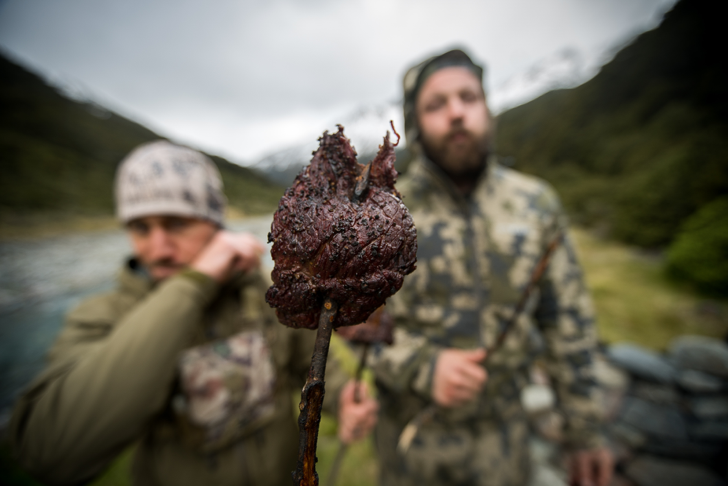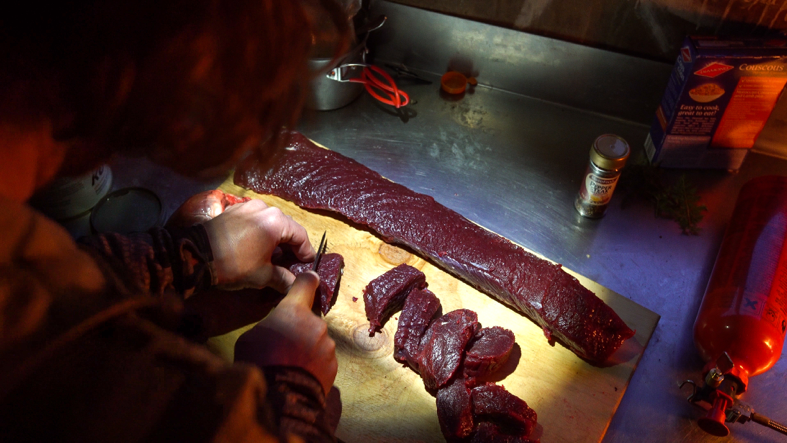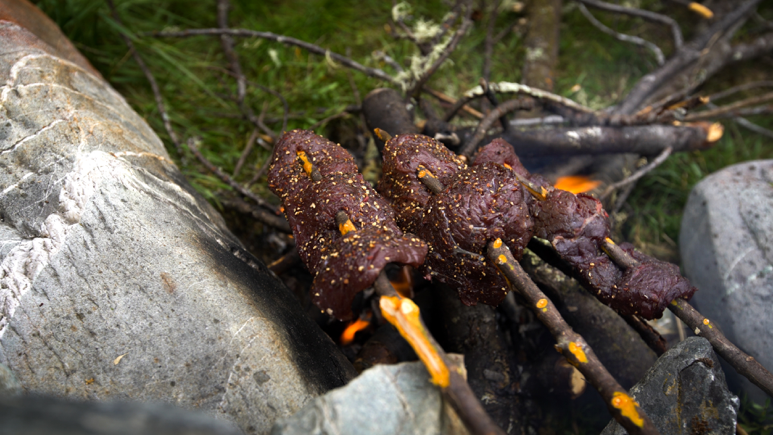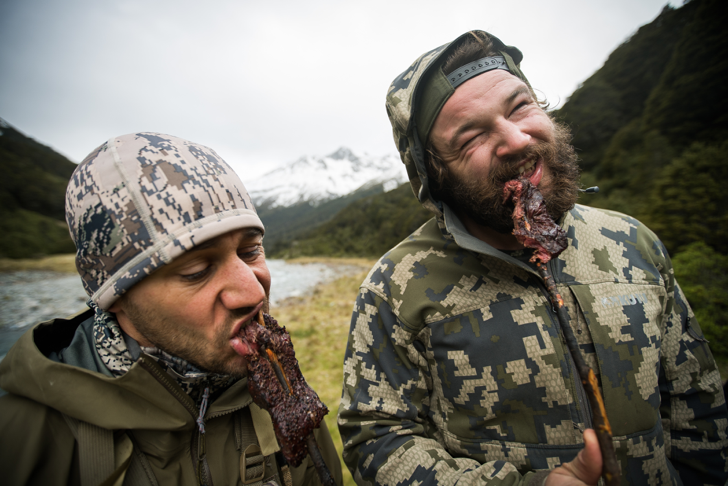All Photos Credit Cedar & Sagebrush
It’s day eight of your ten-day backpack hunt. You have been living out of your backpack, eating freeze-dried meals the entire trip. Every night you camp in a new spot, and running ridgelines has become second nature. Now you find yourself kneeling over your (insert mountain game species of your choice here) kill and you begin to process your harvest of a lifetime. The pictures have been taken, and now, as your knife carves out the most sought-after cuts of the pure, organic meat, your mind starts to become consumed by the idea of the first meal from your kill. Your body has been screaming for fresh protein since day two. But the fact that you are roughing it in the backcountry doesn’t mean that your meal shouldn’t be fit for a king. First things first, we need to acknowledge that cooking wild game meat in the field, the same day as the kill, is not the ideal culinary situation. Having said that, we all know that this is can be the most rewarding and delicious meal of our lives, owing to the extenuating circumstances around how it was acquired. With that in mind, let’s talk about how to maximize your trophy meal in the field.
First things first, we need to acknowledge that cooking wild game meat in the field, the same day as the kill, is not the ideal culinary situation. Having said that, we all know that this is can be the most rewarding and delicious meal of our lives, owing to the extenuating circumstances around how it was acquired. With that in mind, let’s talk about how to maximize your trophy meal in the field.
Rigor
Rigor mortis is a chemical reaction in freshly deceased meat that will toughen it up. We have all seen this before; an example would be pulling a stiff carcass from your truck a couple hours after the kill. This reaction lasts approximately 48 hours, but no one wants to wait that long to enjoy the spoils of their hunt. If you have the will power to do this, then you are a stronger man than I. But since we are already salivating as we butcher our hard-earned game, let’s figure out the best way to work around this.
The Right Cuts
There are two types of muscles in an animal: muscles of attachment and muscles of locomotion. The locomotion muscles are the ones that get used all the time and are naturally less tender. Think all four legs. Muscles of attachment are the muscles that hold the animal together but don’t get worked that much, therefore they are more tender; e.g., backstraps and tenderloins. When choosing the cuts of meat for your trophy meal, choose one of the muscles of attachment. If you are smart, you will start with the one that has the word “tender” right there in the name.
Since we can’t wait 48 hours for the meat to naturally tenderize itself, how can we make it more tender? A lot of cuts of meat back home will be mechanically tenderized by being processed through a Jaccard machine. Imagine a bunch of very small blades going through the meat, cutting the muscle fibers into smaller, more tender pieces. So, how can we replicate this in the field? EASY. Slice your chosen cuts very thin prior to cooking. Or if you are cooking bigger cuts like the backstrap, it pays to slice it open into one long piece of meat, no thicker than 3/4″, before putting it on a skewer.
Seasoning
The secret behind why restaurant food tastes so good is simple: seasoning. The reality is that all of our food needs salt. Salt brings out the natural flavors of our food and generally makes it more palatable. For the miniscule weight of packing some seasoning into the mountains, the reward of an amazing trophy meal is more than worth the effort. Since we usually have more important things to worry about leading up to a hunt, I recommend packing some pre-made seasoning mixes. My personal favorite is Johnny’s Seasoning Salt, but any one of your preferred concoctions will do. For a little something extra, I throw a couple small individual packets of Sriracha hot sauce in my bag to spice things up. These can be found online, and are also killer to drizzle onto your Mountain House meals!
I have never met someone who doesn’t like smoked meat. The flavor triggers something primal within us, harkening back to our days of cooking meat over a fire in a cave. I truly love it for cooking up freshly killed game as this process cooks the meat slowly, which in turn makes it more tender. Not a bad thing considering the rigor we are battling. So to keep it simple, do the following:
- Start a fire with a small flame, no more than 6 inches high.
- Take a 4” piece of tenderloin and cut it multiple times against the grain to make it a flat piece of meat, approximately 1/2” – 3/4” thick, and skewer it on a green stick.
- Season the meat liberally with your seasoning mix of choice.
- Arrange rocks to hold the meat 6” above the flame so that it is directly in the smoke.
- Let the meat cook, turning intermittently. Patience is key here. It should take 30 minutes or more, depending on the heat from your small fire.
- When smoked long and slow enough, the meat will take on a reddish-brown color and pull apart easily.

You have been patient enough; time to enjoy your spoils. The best way to eat the spiced, smoky meat is directly off the stick you cooked it on, but if the meat is still tough, then take the time to slice it against the grain into thin, bite-sized pieces. Nothing goes better with fire-smoked trophy meat than a flask of bourbon or scotch. If you find yourself without either of these due to some rainy days earlier in the hunt, that’s certainly understandable. But if you didn’t pack a flask, then we need to have a serious chat about how to properly prepare for a trophy hunt! Maybe that will be my next article?! Bone apple tea!
About the Author:
Connor was born and raised in Vancouver, B.C. and is a Product Development chef at a well-known restaurant chain there. Connor is most passionate about backpack hunting adventures in the mountains and capturing these adventures via film and photography. You can see more of his work on Instagram through his feed @cedarandsagebrush.

